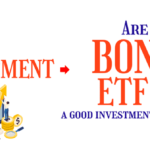Stock markets are present in every country with a stable economy which plays a main role in stock trading and investing. Knowing about the Stock market is essential for traders and investors. Read about the basics of stock markets in this article.
What exactly is the Stock Market?
Stock markets are public marketplaces for the issue, acquisition, and sale of stocks that trade on a stock exchange or over-the-counter. Stocks, also known as equities, reflect a company’s fractional ownership, and the stock market is a marketplace where investors may purchase and sell ownership of such investible assets. An effective stock market is considered vital to economic growth because it allows enterprises to swiftly obtain funds from the general public.
Stock Trading History
Although stock trading may be traced back to the mid-1500s in Antwerp, modern stock trading is widely acknowledged to have begun with the trading of shares in the East India Company in London.
1. The Beginning of Investment Trading
Throughout the 1600s, the British, French, and Dutch governments granted charters to several enterprises with the name East India. These are the first examples of limited liability organizations (LLCs), and many only lasted for one journey. All products returned from the East were conveyed by sea, undertaking perilous journeys frequently threatened by storms and pirates.
2. East India Company (EIC)
The establishment of the East India Company in London resulted in a new investment model, with importing firms selling stocks that reflected a fractional ownership position in the company. The new business model allowed corporations to request bigger investments per share, allowing them to quickly expand the size of their shipping fleets.
3. The First Stock Exchange and the First Shares
The London Stock Exchange was established in 1772, but shares were not traded on a regulated exchange until the LSE became functional in 1773. Company shares were issued on paper, allowing investors to swap shares with one another. The foundation of the LSE caused major financial turbulence, yet exchange trade managed to persist into the 1800s.
4. The New York Stock Exchange’s Beginning
The New York Stock Exchange (NYSE), founded in 1792, was the first stock exchange in the United States. The NYSE was geographically strategically positioned near some of the country’s top banks and corporations. The exchange imposed share listing standards and very high fees at first, allowing it to soon become a wealthy institution itself.
Description of the Stock Market – Basics
Stock exchanges provide a secure and regulated environment in which market players can trade shares and other eligible financial products with little to no operational risk. According to the government’s directives, the stock market serves as both primary and secondary markets under the guidelines established by the government.
Companies issue and sell their shares to the public for the first time on a primary market through the procedure of an initial public offering (IPO).
A corporation splits itself into multiple shares and sells part of those shares to the general public for a price per share. The stock market serves as a facilitator for this capital-raising process and is compensated by the firm and its financial partners for its services.
The stock market or exchange maintains several market-level and sector-specific indicators, such as the S&P (Standard & Poor’s) 500 index and the Nasdaq 100 index, which offer a gauge of the overall market’s movement.
What Roles do Stock Markets Play?
The stock exchange guarantees price transparency, liquidity, price discovery, and fair trading practices.
The stock market guarantees that all market players with an interest in securities have access to data for all purchase and sell orders, therefore assisting in the fair and transparent pricing of stocks. The market also guarantees that relevant purchase and sell orders are efficiently matched.
Market makers, investors, traders, speculators, and hedgers are the types of stock market participants
A long-term investor may buy stocks and retain them, but a trader may enter and quit a position in a few minutes. A market maker offers market liquidity anda hedger may deal in derivatives. Those who are competent and eager to trade should have immediate access to make orders.
Two fundamental approaches to stock market investing
Analysts and investors use a variety of stock selection strategies, but nearly all of them pick one of the two main stock purchasing strategies: value investing or growth investing.
 Value investors
Value investors
Value investors often invest in well-established firms that have demonstrated consistent profitability over time and may provide regular dividend payments. Value investing is more concerned with avoiding risk than growth investment, yet value investors will buy companies if they believe the stock price is a discounted bargain.
 Growth investors
Growth investors
Growth investors seek firms with very high growth potential, expecting to maximize share price increases. They are typically less concerned with dividend income and are more prepared to take risks by investing in small firms. Growth investors frequently pick technology stocks due to their great growth potential.
Why Should You Invest in the Stock Market?
The stock market helps the US economy by providing a means for corporations to acquire funds to develop or start their operations. Investors who feel the economy is expanding will buy equities since a robust economy allows businesses to boost their earnings. A bull market happens when the broad market index rises by 20% or more for at least two months in a succession.
The majority of the stocks traded are ordinary stocks, although some investors purchase preferred stocks, which pay an agreed-upon dividend at regular intervals but lack voting rights. Preferred function similarly to perpetual bonds, with a set yield and some downside protection. Traders will purchase and sell stocks regularly, taking advantage of modest price changes.
The Stock Market’s Goals – Capital and Investment Income
The stock market provides two critical functions.
- The first is to supply financing to businesses so that they can raise funds and expand their operations.
- The firm avoids accruing debt and paying interest charges on that debt by issuing stock shares instead of borrowing the funds needed for development.
The secondary goal of the stock market is to allow the investors (those who buy stocks) to get share in the earnings of publicly listed corporations.
- In this strategy, investors will earn by selling their shares at a profit if the stock price rises above their purchase price.
- Another strategy is, Investors can make fortune while acquiring the stock at a high price and selling it back when it gets low in its value (shorting of stock), But this strategy needs excellent knowledge about the Stocks and Stock Trading.
The Dangers of Stock Market Investing
Stock trading is an emotional rollercoaster; if the stock price goes to zero, you might lose your whole investment. If investors believe the economy is sluggish or stagnating, they may prefer to invest in
bonds, which are a safer bet. Bonds provide a set return for the life of the loan and often perform well during the business cycle’s contraction phase.
A stock market correction occurs when stock market prices fall by less than 10%. A crash can cause a recession, and history demonstrates that this happens frequently. A bear market lasts at least two months, however, the average is roughly 11 months and can last up to 20 months or more.
A Beginner’s Guide to Stock Investing
If you are new to stock trading and like to invest in the stock market, some of the important steps you should follow are,
- Determine Your Risk Tolerance
- Determine Your Investment Objectives
- Determine Your Investing Personality
- Select an Investment Account
- Discover How to Diversify and Reduce Risk.
1. Determine Your Risk Tolerance
Stocks are classified as high capitalization stocks, small-cap stocks, aggressive growth stocks, and value stocks. They all have varying degrees of danger. After determining your risk tolerance, you may focus your investment efforts on stocks that complement it.
2. Determine Your Investment Objectives
You should also establish your investing objectives. When you register a brokerage account with an online broker like Charles Schwab or Fidelity, you’ll be asked about your investing goals (as well as the degree of risk you’re prepared to accept).
- If you’re just starting in your profession, one of your investment objectives might be to raise the amount of money in your account. When you’re becoming older, you wish to produce money from savings and investments and to protect your wealth.
- Your investing objectives might include purchasing a home, paying for your retirement, or saving for your children’s education. Goals may shift over time. Just be sure you identify and evaluate them regularly so you can stay focused on accomplishing them by investing in stock markets strategically
3. Determine Your Investing Personality
Some investors like to manage their money actively, while others prefer to set it and forget it. Your preferences may vary, but choose a method to get started.
- You might handle your investment and portfolio on your own if you are confident in your investing knowledge and abilities. Traditional internet brokers, such as the two described above, allow you to invest in stocks, bonds, ETFs, index funds, and mutual funds.
- A knowledgeable broker or financial advisor may assist you in making investment selections, monitoring your portfolio, and making adjustments to it. This is an excellent alternative for novices who understand the value of investing but would want the assistance of an expert.
- A Robo-advisor is a hands-off, automated alternative that is often less expensive than dealing with a broker or financial advisor. Once a Robo-advisor software has your goals, risk tolerance level, and other information. It will invest for you automatically.
4. Select an Investment Account
Some investors like to manage their money actively, while others prefer to set it and forget it. Your preferences may vary, but choose a method to get started.
- Workplace Retirement Plan
- An IRA or taxable brokerage account
- A Robo-advisor account
 Workplace Retirement Plan
Workplace Retirement Plan
Through your company’s retirement plan, you can invest in a variety of stock, bonds and mutual funds. 401(k) plans may also allow you to invest in the corporate shares of your employer. Employers may contribute matching funds on your behalf. Contributions are tax -deductible, and growth in account balances are tax-free.
 An IRA or taxable brokerage account
An IRA or taxable brokerage account
Open an Individual Retirement Account (IRS) or a standard, taxable brokerage account to begin investing in stocks. These might include individual stocks, stock mutual funds, Exchange-Traded Funds (ETFs), or stock options.
 A Robo-advisor account
A Robo-advisor account
As previously said, this sort of account analyses your investing objectives and constructs a stock portfolio for you.
5. Discover How to Diversify and Reduce Risk
By investing in a variety of assets or diversifying it, you can lower the chance that the performance of one investment may significantly affect the return on your whole investment portfolio.
Diversification is a financial term that refers to not placing all of your eggs in one basket. When investing in individual equities, it might be tough to diversify if your budget is limited. Mutual funds and Exchange-Traded Funds (ETFs) can be useful in this situation.
Financial Markets of Other Types
The stock market is just one example of many types of financial markets. Make sure you’re familiar with all of them before you invest. So, you get clarity on your investments and other financial markets.
Commodities
Commodities are typically traded via futures options, which complicates matters. Grains, oil, and the oddly termed pork bellies are among them.
Foreign exchange
Foreign exchange is the buying and selling of currencies. It carries a significant risk since values can fluctuate rapidly and substantially for no apparent reason.
Derivatives
Derivatives are highly complex instruments whose value is derived from the underlying asset, such as subprime mortgages. Individual investors should avoid it. They might provide big profits, but they can also empty your whole life savings in a single day.
Read our article – Financial Markets: Easily understand its Functions, Types, Participants,
Regulations, Process – to easily understand the basics of Financial Markets.
Frequently Asked Questions
 When do the stock exchanges open and close?
When do the stock exchanges open and close?
Every day, the stock market opens at 9:30 a.m. EST, except on holidays when the market is closed. Most days, it shuts at 4 p.m., except on holidays, when it closes earlier. Many brokerages also provide after-hours trading. A brokerage, for example, may enable traders to make orders from 7 a.m. to 8 p.m.
 What are the instruments traded in the stock markets?
What are the instruments traded in the stock markets?
The stock exchange exchanges equity shares of numerous publicly traded corporations.
Furthermore, the markets trade various products such as index futures, index options, stock futures, stock options, VIX futures, and so on. Stock markets exchange both equities and derivative goods.
In a Nutshell – Stock Market
Have you invested in Stock Markets? Share your experience below in the Comments section so that other traders can learn from it. Let us teach and educate one-to-one to develop the global trading environment into a most legit one without scams. Subscribe to our Newsletter to get more updates from Trading Critique.



 Value investors
Value investors When do the stock exchanges open and close?
When do the stock exchanges open and close?




When I originally commented I clicked the -Notify me when new comments are added- checkbox and now each time a comment is added I get four emails with the same comment. Is there any way you can remove me from that service? Thanks!